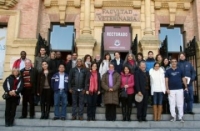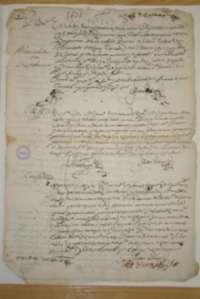Development of a new method to analyze authenticity of vinegar
Escrito porFundación Descubre
This technique allows examination of vinegar properties and with lower cost of the quality control process
A sensor to analyze Iberian pig authenticity in real time
Escrito porG.C.-E.L.
Researchers from the School of Agricultural and Forestry Engineering (ETSIAM) at the University of Córdoba have developed several applications for real time determination of food profuct quality and authenticity in sectors such as Iberian pork and fruit and vegetables. For this, experts used portable spectral sensors based on NIRS technology, which is based on a relationship between spectral measurements and physical and chemical parameters in food and allows instant, nondestructive analysis of different product samples, such as loin, ham, plums, asparagus or orange.
El proyecto COMET-LA, seleccionado para debatir el futuro de Europa como un actor global
Escrito porG.C. - E.L
La investigadora de la Universidad de Córdoba y el ceiA3 María del Mar Delgado expondrá en Bruselas la experiencia acumulada por el proyecto en la gestión participativa y ascendente de recursos naturales
G.C.-E.L.
A work of veterinarians from the Agrifood Campus of International Excellence ceiA3 at the University of Córdoba achieved international recognition in the 31st Meeting of The European Society and College of Veterinary Pathologists held in London
Members of Vitenol Research Group receive Jose Luis Messiah award
Escrito porPress Office
Members of 'Vitenol' Research Group at the University of Córdoba, which is part of the Agrifood Campus of International Excellence of Andalusia (ceiA3) received the XXXV Research Award 'José Luis Iglesias Messiah' granted by Santa Ana University Center to best research work presented at the Symposium of Enology and Viticulture in Tierra de Barros.
Research proves Moorish origin of Golden Century playwright Alvaro Cubillo de Aragón
Escrito porG.C.-E.L.
Research work brings to light unpublished documents proving that Granada author and his relatives stayed in Spain after the 1609 expulsion decreed by Philip III



